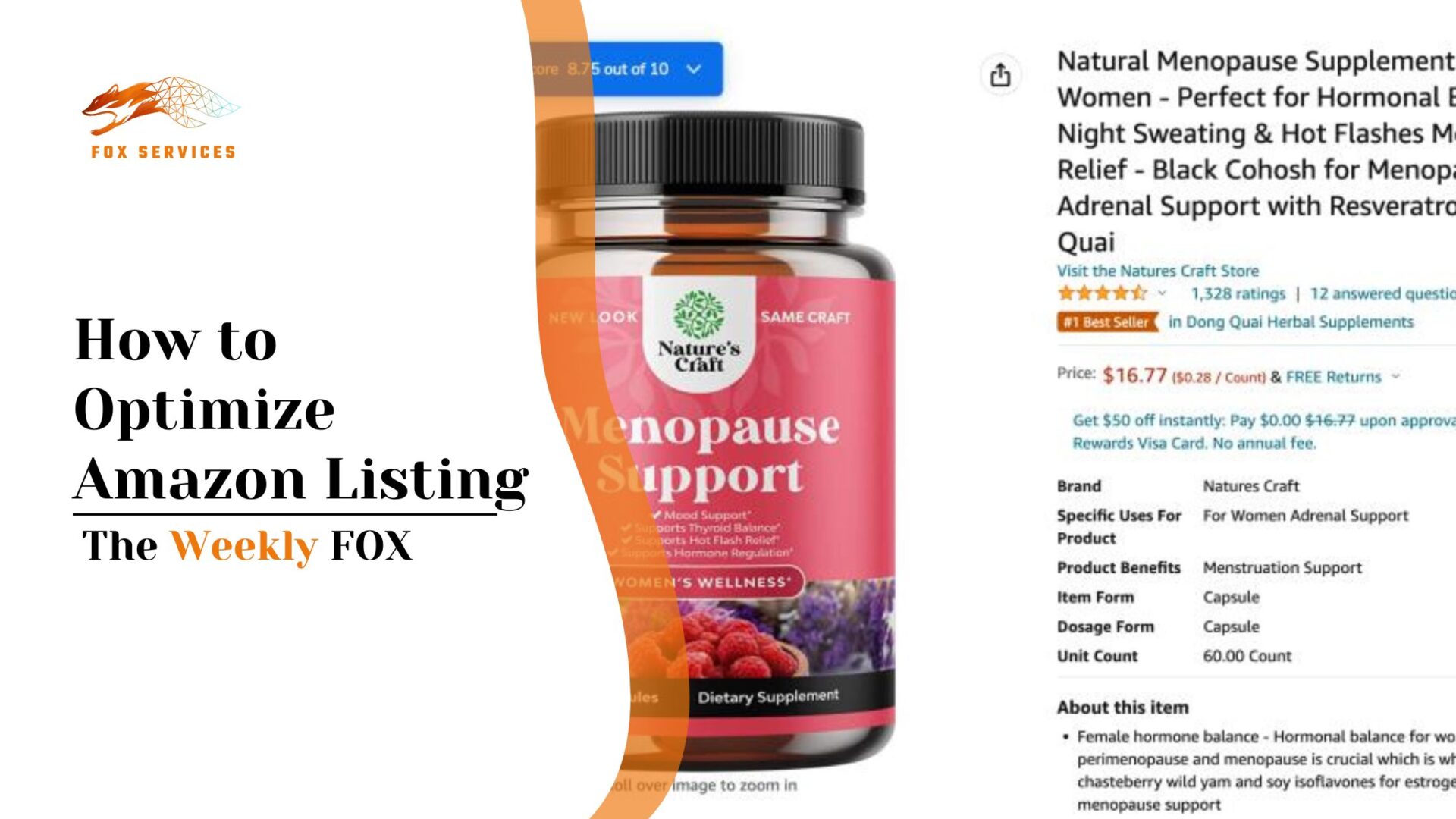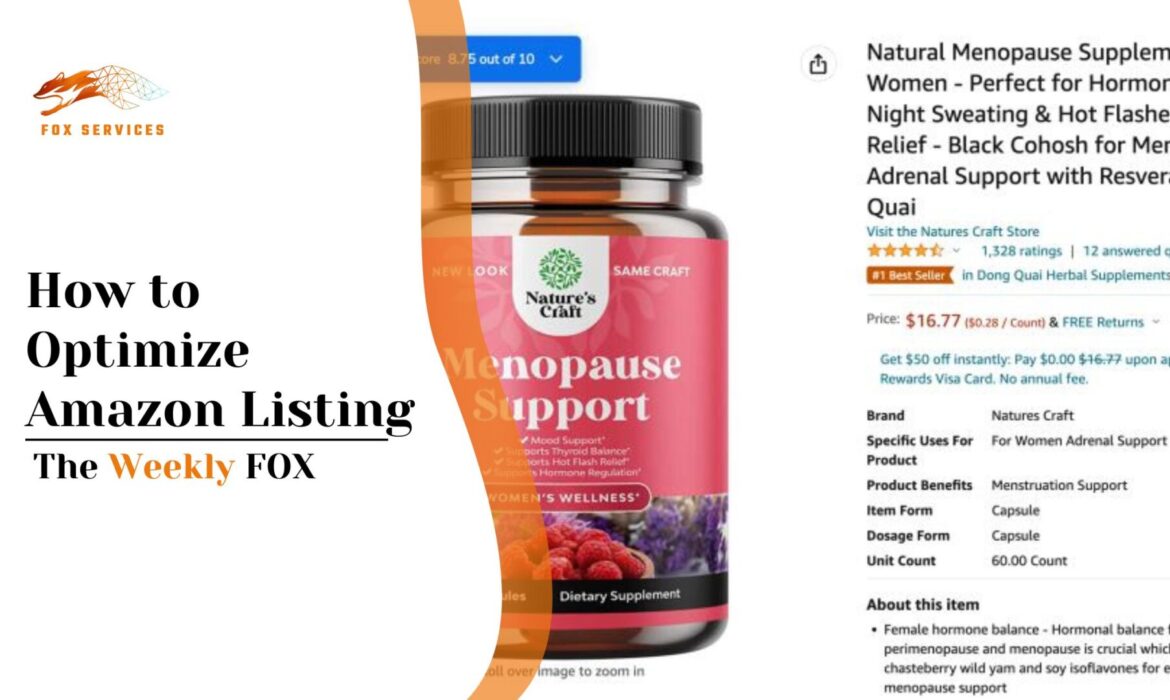How to Optimize Amazon Listing for SEO: A Step-by-Step Guide to Skyrocket Sales
If you’re wondering how to optimize Amazon listing for SEO, you’re in the right place.
Selling on Amazon without SEO is like opening a store in the desert—nobody will find it. With over 9 million sellers on Amazon, standing out isn’t just about good products; it’s about ranking high in search results so shoppers click and buy.
In this blog, you’ll learn how to properly optimize your Amazon listing to increase traffic, improve visibility, and boost conversions—organically.

How to Optimize Amazon Listing for SEO
Why SEO Matters on Amazon
Amazon is the world’s largest product search engine. That means its algorithm (called A9) determines which listings show up first when someone searches for a product.
Optimizing your product listing for Amazon SEO helps:
- Rank higher in search results
- Increase click-through rate (CTR)
- Improve conversion rate
- Reduce reliance on paid ads
Want to reduce your ACoS and scale profitably? It starts with SEO.
Key Elements of Amazon SEO
1. Keyword Research Is the Foundation
Use tools like Helium 10, Jungle Scout, or Amazon Search Suggest to find:
- High-volume keywords
- Long-tail search terms
- Competitor keywords
Focus on relevance and intent. Keywords like “stainless steel water bottle 1L” convert better than just “bottle.”
🧠 Pro Tip: Don’t keyword stuff. Use natural language that aligns with how shoppers search.
2. Optimize Your Product Title
The title is the most important on-page SEO element.
✅ Include:
- Primary keyword
- Brand name
- Key feature (size, quantity, benefit)
- Target audience (men, kids, etc.)
📌 Example:
“EcoMate Stainless Steel Water Bottle – 1L Leak-Proof, BPA-Free Travel Flask for Gym & Office”
3. Bullet Points: Sell the Benefits
Amazon allows up to 5 bullet points—use them wisely.
✅ Best practices:
- Start with a benefit
- Add a feature
- Use relevant secondary keywords
- Write in sentence case (easier to read)
🔥 Bonus: Add emotional triggers like “Never worry about spills again” to drive engagement.
4. Product Description: Tell a Story
Even though most buyers focus on bullet points, a strong description improves SEO and conversions.
Use HTML formatting for readability (<br> for line breaks). Tell your brand story, explain benefits, and answer objections.
5. Backend Search Terms (Hidden Keywords)
Amazon gives you 250 characters in the backend “search terms” section. Use them for:
Synonyms
Misspellings
Long-tail keywords
Spanish terms (if relevant)
Don’t repeat words already in your title/bullets. No commas needed.
6. Use High-Quality Images
While images don’t directly impact SEO, they affect conversion rate—which does impact ranking.
Use:
- 1 white background main image
- 3–4 lifestyle shots
- 1–2 infographics
- 1 image with benefits text overlay
Want to know how to build brand trust through images? Read our post on Social Media Content Creator Best Practices.
External Signals Also Matter
Your external traffic (from Google, social media, or influencers) also helps rankings. Drive targeted traffic from:
- Facebook Ads
- Instagram Reels
- Influencer UGC
- Blog backlinks
🔗 External Resource: For advanced SEO hacks, check Moz’s SEO for Amazon Guide.
Mistakes to Avoid
❌ Keyword stuffing
❌ Duplicate phrases in backend fields
❌ Poor-quality images
❌ Not tracking conversion rates
❌ Ignoring reviews and Q&A
Now that you know how to optimize Amazon listing for SEO, take action. Even one small change—like improving your title or bullet points—can lead to more impressions, better clicks, and higher sales.
It’s not about tricking the algorithm. It’s about serving your customers better—and Amazon rewards that.
🎯 Need Help Optimizing Your Amazon Listings?
Let’s take the guesswork out. Get a free 1-on-1 strategy session where I’ll review your listing and give actionable recommendations to improve ranking, conversions, and organic sales.
👉 Book your FREE 20-minute listing audit
Limited slots available weekly. Reserve yours now and take the first step toward building a high-converting, fully optimized Amazon presence.







